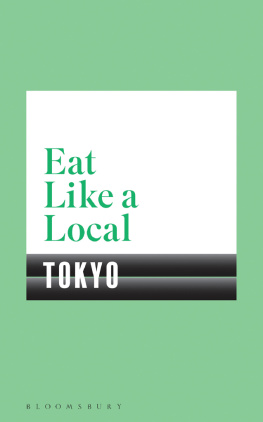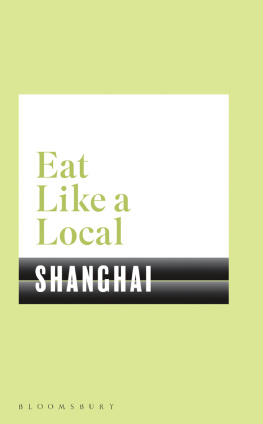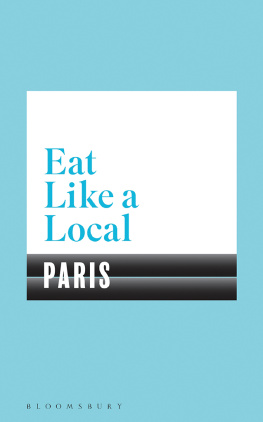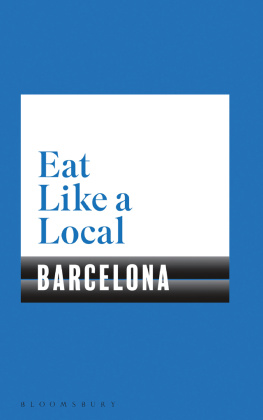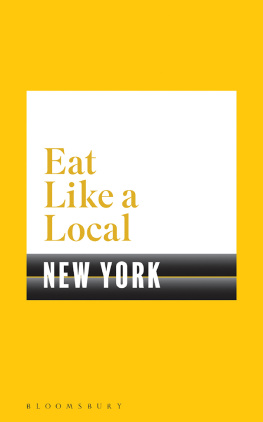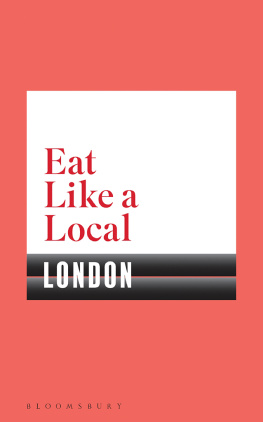
Contents

Welcome to Tokyo
Japan is often described as a food-obsessed nation; its no surprise that Tokyo, as its capital and most populous city, has an overwhelming concentration of excellent places to eat and drink, from exclusive fine dining to neighbourhood holes-in-the-wall. Its difficult to know where to begin, but in a city as vast as Tokyo, our best advice is to get out and explore. Get off the beaten path, poke your nose into a neighbourhood izakaya or noodle shop, and go home with a memorable dining experience.
This guide hopes to familiarise you with the types of food that Tokyoites eat (hint: its not all sushi and ramen), introduce you to a few of our local food enthusiasts favourite spots and arm you with the knowledge to seek your own culinary adventure.
Here are a few tips to start:
Take note of the season. Much of Japanese culture revolves around the seasons and the cuisine is no exception. No matter what time of year you visit, look out for seasonal delicacies and youll likely be rewarded.
Youre probably going to stand in a queue at some point. Use queues as a clue for venerated local favourites and neighbourhood hotspots. Its usually safe to assume that if time-pressed Tokyoites are going to the trouble of waiting for food, its probably going to be good.
Dont expect English everywhere. Most restaurant menus, especially smaller neighbourhood establishments, are still in Japanese only. Politeness, an open mind and knowing a few key phrases go a long way.
Vending machines and convenience stores will be your constant companions. Dont overlook these sources of affordable, tasty food a quick fix of karaage (fried chicken) or onigiri (rice balls filled with fish, meat or pickled vegetables) will keep you happily fuelled between meals.
This book is by no means exhaustive; Tokyo has over 160,000 restaurants and weve barely scratched the surface. And the restaurants featured here arent necessarily the ones that are in your typical guidebook. Instead, we hope youll get a taste of the everyday lives of food-obsessed Tokyoites and try eating like one, too.
Explore the City
Central Tokyo
Plush European restaurants and refined traditional Japanese cuisine sit side by side in fashionable Omotesando and Aoyama . Roppongi s image as a seedy clubbing area is slowly changing with commercial developments housing modern, upmarket chains and exquisite dessert shops among the more traditional sushi shops and izakaya .
Central Nihonbashi and neighbouring Marunouchi host a mix of some of the oldest and newest speciality shops established in the Edo period, often still run by the same family, alongside glittering department stores and towering office complexes housing reliable but uniform chains catering to the business crowd. Jimbocho and Kanda have a more traditional, older vibe and are home to dozens of ramen shops, tempura and other small independent eateries.
Although the Bubble-era glamour of glitzy Ginza has somewhat faded, you can still expect top quality at its exclusive kaiseki restaurants, luxury sukiyaki and sushi, and old-school cocktail lounges. In Yurakucho and Shimbashi just to the west, cheap, casual izakaya clustered underneath the railway lines draw crowds of salarymen eating yakitori until late at night.
The eastern neighbourhoods
East Tokyo is home to clusters of old, tradition-steeped shitamachi neighbourhoods that still retain the look and feel of decades gone by. Asakusa buzzes with stalls selling street snacks and boasts generations-old soba, tempura and wagashi shops, but also an increasing number of new-wave, independent cafes especially towards Kuramae . Kappabashi Dougu-gai, a street lined with kitchenware shops, is a paradise for cooks shopping for top quality knives, ceramics and other implements.
Monzen- Nakacho isnt on the main tourist circuit but is home to authentic, unadorned traditional Japanese izakaya, sweets shops and teahouses. Across the river is the man-made island of Tsukishima , best known for its street lined with sixty-odd monjayaki eateries.
The western neighbourhoods
Theres something for everyone in the lively entertainment district Shibuya : from fast-food chains to smoky yakitori bars. Leaving the bright lights behind, head north towards Tomigaya and Yoyogi Park , quietly humming with cosy natural wine bistros, stylish cafes and intimate izakaya .
The streetstyle capital Harajuku is where youll find the latest viral food trends aimed at a young, social-media savvy crowd. But past the kawaii novelty pastel crpes and rainbow candyfloss, youll find the backstreets of Sendagaya , dotted with casual, creative eateries.
Just north is Shinjuku , another of Tokyos main centres jam-packed with cheap and cheerful izakaya and standing soba bars, to mid-range chains, to Michelin-star dining. Yakitori lovers shouldnt miss Omoide Yokoch; this cramped, atmospheric lane is home to eighty tiny izakaya serving up grilled meat on skewers and other inexpensive treats.
The residential wards of Suginami and Setagaya are full of vibrant mini-centres like Kichijji , Kenji , Shimokitazawa and Sangenjaya , where youll find plenty of tiny and fashionable coffee shops, hundreds of independently owned izakaya, craft beer, bakeries and curry joints.
Youll find smart, stylish riverside cafes and bars in Nakameguro and unpretentious yet sophisticated nightlife in the cocktail dens of Ebisu . Towards Daikanyama things start to get markedly upscale, with chic open-air cafes rubbing shoulders with swanky French and Italian eateries.

Meet the Locals
Mika Reilly
Mika Reilly currently lives in Tokyo. Formerly of Wellington, New Zealand, where she wrote about food for print and online publications, she is now exploring her cultural roots in Japan by chasing down the meals she ate as a child growing up in a part-Japanese household. She is a regular contributor to New Zealand-based independent food publishing initiative Stone Soup Syndicate.
Teru Harase
ikiespresso.com
Tokyo-born Teru Harase spent years living in New Zealand and working in the cafe industry before returning to Japan to open a New Zealand-influenced cafe in the arty, eastern neighbourhood of Kiyosumi-Shirakawa. He believes the thing that makes Tokyo a standout food city is the variety and concentration of truly specialist businesses.
Yuko Yokoyama
Yuko Yokoyama is a resident of Tokyos shitamachi, the old, low-lying neighbourhoods where centuries-old traditions of Tokyo still carry on. Although she works a regular office job, her voracious appetite and passion for delicious food and exploring the city on foot have given her a wealth of knowledge on where to get the most authentic shitamachi dining experiences.
Atsushi Sakao
onibuscoffee.com
Runs speciality coffee roaster and cafe Onibus Coffee, with the goal of making Tokyoites lives more enjoyable by continuing to bring people into close affinity with good coffee. His philosophy on food is similar to that on coffee: The things that bring us the most excitement are products where you can get a sense of the ingredients story or the care taken by those who made it.

